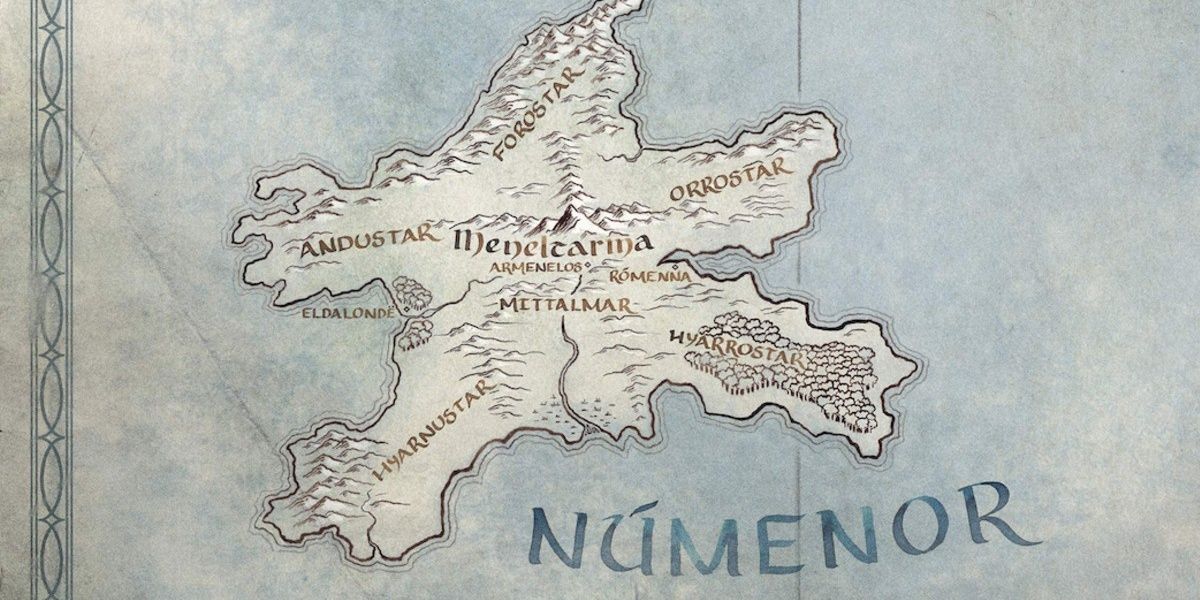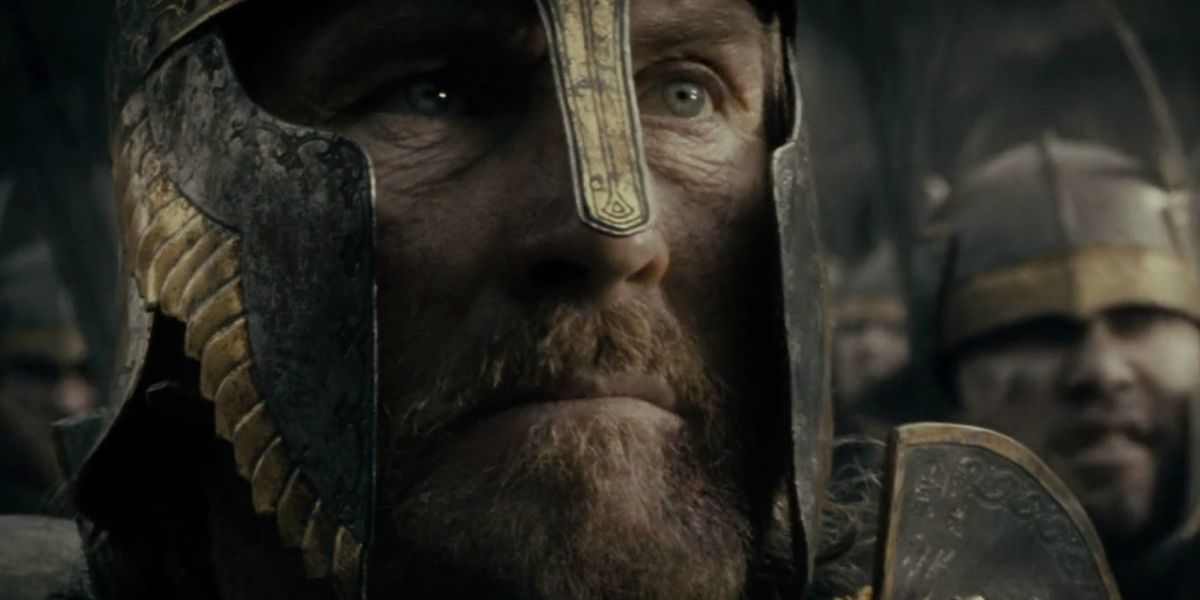
J. R. R. Tolkien is inextricably linked with the fantasy genre, as The Lord of the Rings and the rest of his legendarium set the blueprint for most fantasy stories that followed. Still, it was not the only genre that interested him. He and his friend C. S. Lewis, the author of The Chronicles of Narnia series, also enjoyed discussing science fiction. Though Tolkien was often disappointed by contemporary sci-fi stories, such as Frank Herbert’s Dune, the concepts therein fascinated him. At some point in the 1930s, Tolkien and Lewis challenged each other to break out of their fantasy comfort zones by writing sci-fi novels. Tolkien tasked Lewis with writing about space travel. This resulted in Out of the Silent Planet, which Lewis published in 1938, one year after Tolkien’s The Hobbit. Lewis went on to write two sequels, Perelandra and That Hideous Strength, which came to be known as the Space Trilogy.
In turn, Lewis tasked Tolkien with writing about time travel. This was far more difficult, as Tolkien never completed his half of the challenge. However, the unfinished draft of his novel, tentatively titled The Lost Road, laid the groundwork for one of The Lord of the Rings‘ most important locations: the island kingdom of Númenor, which played a prominent role in Prime Video’s The Lord of the Rings: The Rings of Power. Tolkien’s son, Christopher, eventually published The Lost Road as part of a collection titled The Lost Road and Other Writings. This gave fans a glimpse at a story that was unlike anything else in Tolkien’s legendarium yet deeply tied to the characters, locations, and themes of The Lord of the Rings.
Tolkien Made Númenor Part of the Real World

The Lost Road began in then-modern-day England. It followed a history professor named Alboin Errol and his son, Audoin. They had such unusual names because they were both named after historical kings of the Lombards, a Germanic tribe that conquered Italy in the 6th century. Ever since he was a child, Alboin had dreams about ancient languages and unknown lands, including Númenor. He believed that these dreams were the memories of his ancestors, and they instilled in him a desire to somehow travel through time. Though sci-fi was the origin of The Lost Road, Tolkien’s explanation for time travel was more magical than scientific. Alboin stated, “I wish there was a time machine… But Time is not to be conquered by machines. And I should go back, not forward; and I think backward would be more possible.” Instead, Alboin got his wish one night when a mysterious figure appeared to him in his sleep. This was none other than Elendil from The Silmarillion and The Lord of the Rings, neither of which Tolkien had yet written.
Elendil gave Alboin the chance to send his consciousness to the past along with that of his son. Their bodies would remain in the present, but they would be able to experience the lives of their ancestors. Though worried about the dangers, Alboin accepted Elendil’s offer. Tolkien skipped the next several chapters, but he explained what would have happened within them. Alboin and Audoin would have traveled to multiple periods and locations throughout European history, embodying pairs of fathers and sons. These would have included the Lombardic kings for whom they were named as well as the Anglo-Saxon sailors Ælfwine and Eädwine. These characters were unrelated to The Lord of the Rings, though Tolkien did reuse the name Elfwine — an alternate spelling of Ælfwine — for Éomer’s son. Finally, Alboin and Audoin would have experienced the lives of the Númenóreans, Elendil, and Herendil, the latter being an early version of Isildur. The names of these characters were all connected; Alboin, Ælfwine, and Elendil each meant “Elf-friend” in various languages, while Audoin, Eädwine, and Herendil each meant “Fortune-friend” or “Bliss-friend.”
The Lost Road Contained an Early Version of the Downfall of Númenor
The Númenórean section was where Tolkien continued the narrative. Alboin and Audoin, embodying Elendil and Herendil, witnessed the splendor of Númenor but also watched its downfall. The evil King Tarkalion, an early version of Ar-Pharazôn, ruled Númenor with an iron fist. Influenced by the Dark Lord Sauron, Tarkalion planned to wage war against Valinor in hopes of achieving eternal life. Elendil was secretly the leader of the Faithful, the Númenóreans who still supported the Valar against Tarkalion’s wishes. This was very similar to the final version of the Downfall of Númenor that Tolkien described in The Silmarillion. In The Lost Road, Herendil follows Tarkalion, but he is conflicted about his choice. As he and his father discussed the coming war with Valinor, Elendil revealed that he was the leader of the Faithful, and he asked Herendil to join him in the fight against Tarkalion.
Though Tolkien did not finish the story, he made notes about three possible endings. In the first, Herendil would have accompanied Tarkalion on a voyage to Valinor with Elendil as a captive, and they all would have drowned at sea. In the second, Herendil would have joined forces with his father but been arrested by Tarkalion, so Elendil would have betrayed the Faithful to save his son. In the third, Herendil would have revealed the secrets of the Faithful to Tarkalion in exchange for sparing Elendil’s life. It is unknown which of these endings — if any — Tolkien would have chosen if he had continued writing The Lost Road. In The Silmarillion, Elendil, Isildur, and many more of the Faithful escaped Númenor just before its destruction, and they ended up founding the kingdoms of Arnor and Gondor in Middle-earth.
The Lost Road Had an Effect on The Lord of the Rings

As for why Tolkien abandoned The Lost Road, he seems to have simply lost interest in the project. In a letter to Charlotte and Denis Plimmer, who had recently interviewed him, Tolkien wrote, “My effort, after a few promising chapters, ran dry: it was too long a way round to what I really wanted to make, a new version of the Atlantis legend.” This explains why he skipped the Lombardic and Anglo-Saxon chapters to get straight to Númenor. Further, Tolkien had a lot on his plate at the time, as he began writing The Lord of the Rings almost immediately after the publication of The Hobbit. However, he did not think that his work on The Lost Road was a waste of time. In the same letter, he wrote,
We neither of us expected much success as amateurs, and actually Lewis had some difficulty in getting Out of the Silent Planet published. And after all that has happened since, the most lasting pleasure and reward for both of us has been that we provided one another with stories to hear or read that we really liked.
Lewis even referenced Númenor in That Hideous Strength, though he misspelled it as “Numinor.” He claimed that the legendary wizard Merlin had learned his magical abilities from refugees who sailed from Numinor to the British Isles.
The Lost Road was not Tolkien’s last attempt at writing a time-travel story. In 1945, he started a novel titled The Notion Club Papers about a literary club whose members had strange dreams about the Downfall of Númenor. Throughout the story, they realized that they were descendants of the Númenóreans and that they had inherited genetic memories of their ancestors. Somehow, they also gained the ability to predict future events, such as a massive storm. The titular Notion Club was a thinly veiled homage to the Inklings, a group at the University of Oxford that included Tolkien and Lewis, and many of the characters were based on people whom Tolkien personally knew. The Notion Club Papers was not as connected to Middle-earth as The Lost Road had been, as it focused primarily on the modern day. However, one of the main characters had the middle name Arundel, a nod to Elrond’s father, Eärendil. Tolkien eventually abandoned The Notion Club Papers as well, likely for the same reasons he stopped writing The Lost Road, but Númenor remained a key part of his legendarium. In hindsight, it is for the best that Tolkien never completed The Lost Road or The Notion Club Papers, because if he had focused his efforts on them, The Lord of the Rings and The Silmarillion may never have existed.




